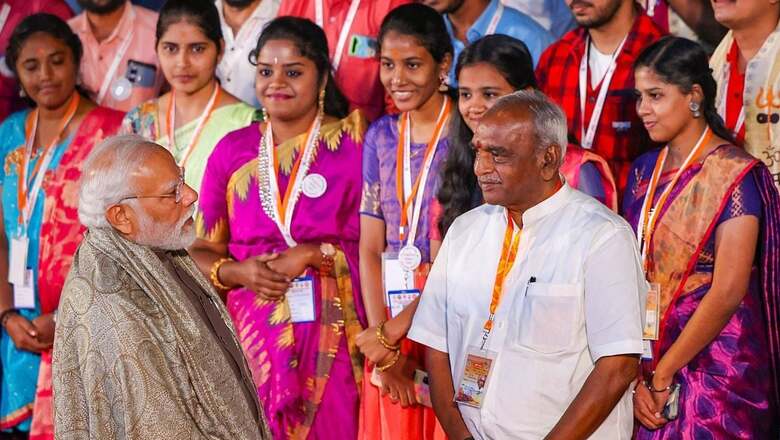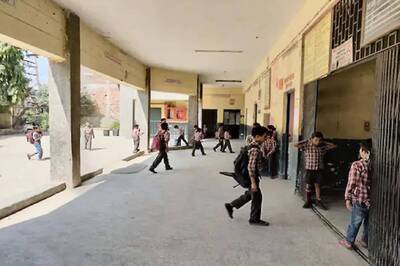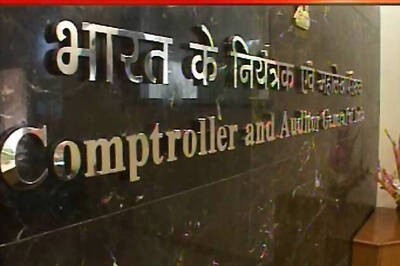
views
Much has been made of the so-called North-South divide, especially by the opposition parties, and much more so as we approach the general elections. The drumming up of noise on this alleged fault line in our national fabric is clearly a ruse by desperate and scattered Modi-opponents to find a cause — any cause — that will capture the imagination of the Indian voting public. Clearly a stunt signifying their fading hopes to save themselves from complete wipeout at the hustings, this issue, some would argue, should best be ignored altogether. No need even to discuss it.
I disagree. Fault lines must be repaired, not ignored. The ruling BJP has a golden opportunity to turn the tide to their advantage if they grasp the problem by the horns, as it were, rather than pretending that it does not exist at all.
But, first, let us consider what the North-South divide refers to. It is a term used to describe the economic, social, cultural and political differences between the states of North India and South India. The geographical division of the North and the South is actually not new. It goes back to ancient times, to the notion of Aryavarta itself, which did not include territories South of the Vindhyas. The legend of the great Agastya Rishi taking the Vedic culture South is one among many stories from times immemorial suggesting such a difference. Difference, yes. Division, no.
But to bring matters up to speed, electorally, the North comprises the states of Madhya Pradesh, Uttar Pradesh, Bihar, Jharkhand, Delhi, Punjab, Himachal Pradesh, Uttarakhand, Jammu and Kashmir, Chhattisgarh, Rajasthan, and Haryana. South India is constituted by the states of Tamil Nadu, Andhra Pradesh, Telangana, Karnataka, and Kerala. In terms of Lok Sabha seats, the South’s tally is 132 out of a total of 543. Tamil Nadu leads the roost with 39 seats, followed by Karnataka with 28, Andhra Pradesh with 25, Kerala with 20, and Telangana with 17. Puducherry and Lakshadweep have one each. In contrast, the North has the numbers overwhelmingly stacked in its favour. Uttar Pradesh alone commands 80 seats. Add Bihar’s 40, Jharkhand’s 14, Madhya Pradesh’s 29, Chhattisgarh’s 11, Rajasthan’s 25, Delhi’s 7, Himachal Pradesh’s 4, Haryana’s 10, Punjab’s 13, Uttarakhand’s 5, and Jammu & Kashmir’s 5. The total is a staggering 243 seats without including the bigger Western states such as Maharashtra and Gujarat.
Clearly, whoever wins the North will rule India.
This fact, coupled with the resistance to the dominance of Hindi, gives separatist and mischievous opposition parties from the South some political cache. In India’s classic identity politics playbook, when caste and religion fail, language and region are marshalled to mobilise grievances. Remember the Dravidian movement, which actually advocated separation from India before Independence? The first Dravida Munnetra Kazhagam (DMK) government led by CN Annadurai came to power in 1967 after giving up separatism, a deal that some consider the precondition for handing over the reins of power. Since then, Dravidian parties have never once been voted out in Tamil Nadu. Fifty-four years is a long time to rule; no wonder anti-North identity politics is deeply entrenched in this Southern state.
More recently, economic data has been assembled to further the cause of the South against the North. Generally speaking, the South continues to outperform the North on most parameters including per capita income and contribution to the central exchequer, not to speak of infrastructure, health, and education. The South is also more urbanised, has lower infant mortality rates, and higher life expectancy. The argument is that the South is subsidising the North, bearing the burden of the latter’s population growth, unemployment, poverty, poor infrastructure, and social backwardness.
Politically, the divide is seen in terms of the main national party the BJP dominating the North with its also-ran rival, the Congress, a poor remainder of its former glory days, tenuously holding on to power in Karnataka and Telangana. Southern parties such as the aforementioned DMK, the All India Anna Dravida Munnetra Kazhagam (AIADMK), the Telangana, now Bharatiya Rashtra Samithi (BRS), and the Communist Party of India-Marxist (CPM), which is only in power in Kerala, continue to wield influence. Most of the latter routinely raise issues of state autonomy, federalism, and cultural identity to marshal their voters and challenge the central government.
The cultural differences between the North and the South are accentuated mainly along linguistic lines. Though Dakhini or the Southern form of Hindi is widely spoken in Telangana, Andhra, and Karnataka, the Northern style standard Hindi is not readily grasped. Tamil Nadu has also been known for its on-going anti-Hindi agitation.
Cuisine, art, architecture, dance, music, craft, and religious practices are also distinctly different South of the Vindhyas. All this is crystalised in the somewhat dubious notion of Dravidianism based on linguistic divergences. The latter are questioned by many to be more ideological than scientific. Finally, skin colour and so-called racial differences, which North Indians routinely tend to exaggerate in their mistaken ideas of superiority.
The BJP and the RSS have rightly emphasised integration, synthesis, commonality, oneness, and nationalism in refutation of the North-South divide. But that is not enough. There must be greater sensitivity to the South’s difference and greater respect for it. The BJP, especially, must eschew the idea of imposing Hindi on the South. Even a perception to this effect will prove detrimental in the long run. As the prime minister himself never tires of showing, other BJP leaders must also learn to speak at least a few sentences in the Southern tongues. And, yes, no matter how much we resent English, we must not make the mistake of disregarding its great utility as a link or connecting language where Hindi falls short.
Both sides need to show greater understanding and empathy, but the greater onus is clearly on the North. One is reminded of Ek Duje Ke Liye (1981), starring Kamal Hasan and Rati Agnihotri. Its overtones of a political allegory with tragic consequences seem still relevant, a poignant reminder, especially on the much-maligned Valentine’s Day, of love betrayed by prejudice and misunderstanding, ending in a double suicide. Political melodrama, dominated by power and money, is much less romantic or sensational, but we must certainly strive to avert its obviously adverse consequences too. In a word, the South, must not be ignored.
(The writer is an author and columnist. Views expressed in the above piece are personal and solely that of the author. They do not necessarily reflect News18’s views)




















Comments
0 comment